Poisonous Plants in Ohio
Have you ever heard the phrase "Leaves of Three, Let It Be?" It is a motto I have lived by my whole life. Not only do you have to be aware of these plants invading your yard, you also need to watch out for them when you are enjoying any outdoor activity such as hiking, hunting, or bank fishing. Join me as I take you on a quick overview of the most common poisonous plants in Ohio.
Poison Ivy
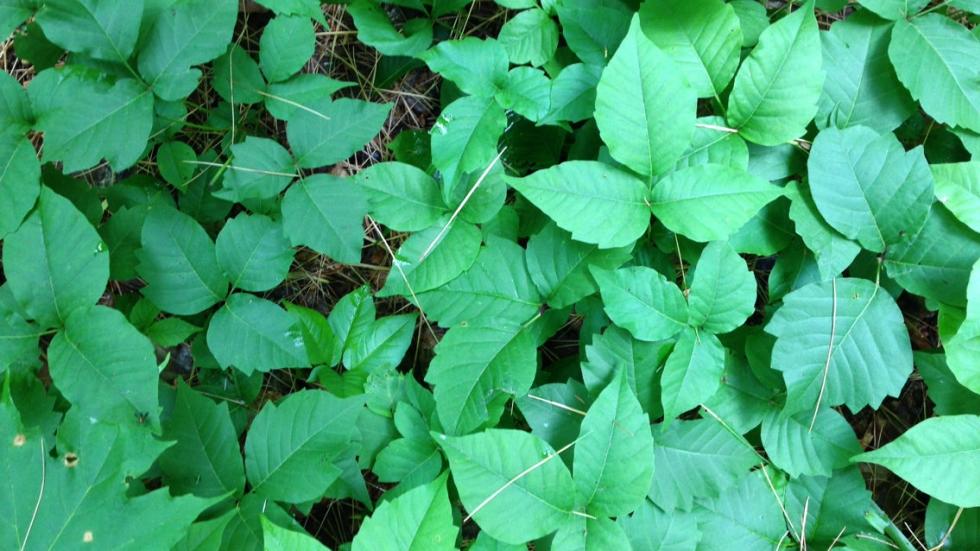 Scientific Name: Toxicodendron radicans
Scientific Name: Toxicodendron radicans
Poison Ivy is the most common poisonous plant in Ohio. Composed of three shiny leaflets, it is easy to recognize. Each mature leaflet is 2-4 inches long and has smooth, lobed, or toothed margins. While poison ivy normally grows as a vine, it sometimes can become shrub-like. In spring its leaves may have a red color, in summer they are green, and in autumn they can be yellow or vibrant red. Poison ivy can be found at the base of trees, along edges of wooded areas, in fields, and along roads. Propagating mostly by seed: it produces seeds within small, white berries that are spread by birds and animals. Poison ivy releases an oil called "urushiol" when bruised or crushed and is contained in all parts of the plant. The oil causes severe swelling, blistering, and itching upon contact with the skin. Even the smoke from burning poison ivy can produce an extremely painful reaction in the eyes and lungs.
Poison Sumac
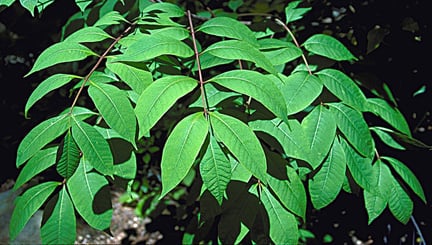 Scientific Name: Toxicodendron vernix
Scientific Name: Toxicodendron vernix
Considered the "most toxic plant in the country", poison sumac grows as a shrub or small tree in wet areas, such as bogs or swamps. It has red or brown stems with clusters of about ten leaves each. The leaves grow in pairs opposite one another, and range from orange in the spring to dark green in the summer months, finally turning red in color during the autumn. During the winter there may be clusters of white berries hanging from the branches.
Poison sumac also contains urushiol and causes the same reaction as poison ivy. If the rash spreads to your face or nether regions, it is recommended to promptly visit urgent care.
Jimsonweed
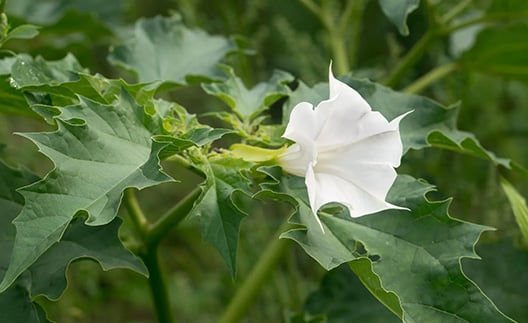 Scientific Name: Datura stramonium
Scientific Name: Datura stramonium
Jimsonweed, also known as Jamestown weed or thorn apple, thrives in rich soil and cultivated fields, but will also grow in wastelands. The plant has large white or violet trumpet-shaped flowers and produces a large spine capsule fruit, which is where it gets the name thorn apple. The stems of Jimsonweed are green and occasionally tinged with purple coloring, bearing toothed to lobed leaves. Containing a toxic alkaloid, all parts of the Jimsonweed are poisonous if ingested.
Stinging Nettles
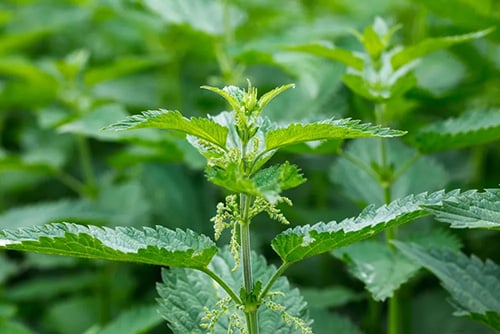 Scientific Name: Urtica dioica
Scientific Name: Urtica dioica
Stinging Nettles are one of the more common poisonous plants I encounter, when I'm gardening or in my flower beds. Stinging nettle stems grow unbranched in patches from 4 to 6 feet tall. The little hairs on the stems can inject your skin with a combination of chemicals. One of these chemicals are formic acid, which helps put the "sting" in bee stings and fire ant bites. It's part of what causes the itchy, and painful allergic reaction on your skin.
Poison Hemlock
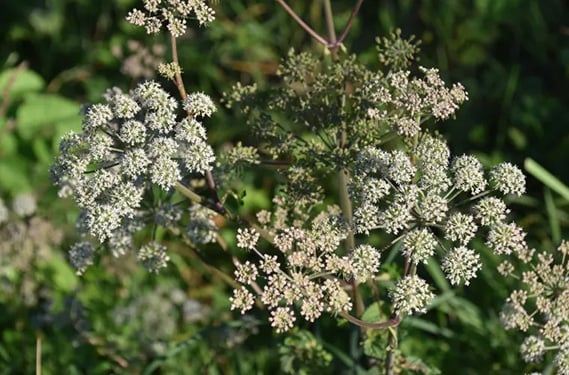 Scientific Name: Conium maculatum
Scientific Name: Conium maculatum
Poison Hemlock is not native to the United States, but instead was imported from Europe as an ornamental plant in the late 1800's. Growing up to 9 feet tall, it has clusters of white flowers with purple spots on the stem. Hemlock is often found on roadsides and near fences. Ingesting any part of the plant can be fatal. The alkaloids can affect nerve impulse transmission to your muscles, eventually killing you through respiratory failure. To this date, there is no treatment for hemlock poisoning.
Giant Hogweed
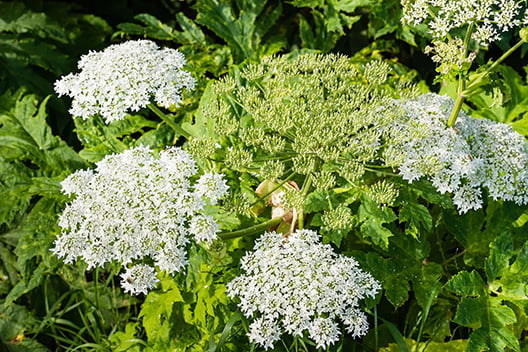 Scientific Name: Heracleum mantegazzianum
Scientific Name: Heracleum mantegazzianum
Found in rich, wet soil near ditches, streams, and farms, Giant Hogweed grows at tall as 15 feet. It has umbrella-shaped groups of white flowers with deep creased leaves. The stems of this plant have white hairs and purple splotches. The sap of giant hogweed can make your skin more sensitive to ultraviolet light, which could cause blister, burn, or scar. It is even known to damage vision.
First Aid
If you find yourself in a situation where you've come in contact with a poisonous plant, immediately rinse your skin. Use rubbing alcohol, poison plant washes, degreasing soap, and lots of water. Make sure to rinse often, as it prevents wash solutions from drying on the skin and further spreading the rash. Apply wet compresses, calamine lotion, or hydrocortisone cream to the skin to reduce itching and blistering. Use an antihistamine to relieve the urges to itch.
For severe cases, or if the rash spreads to the face or genital areas, seek medical help.
For further information, please visit the links below:
https://www.cdc.gov/niosh/topics/plants/symptoms.html